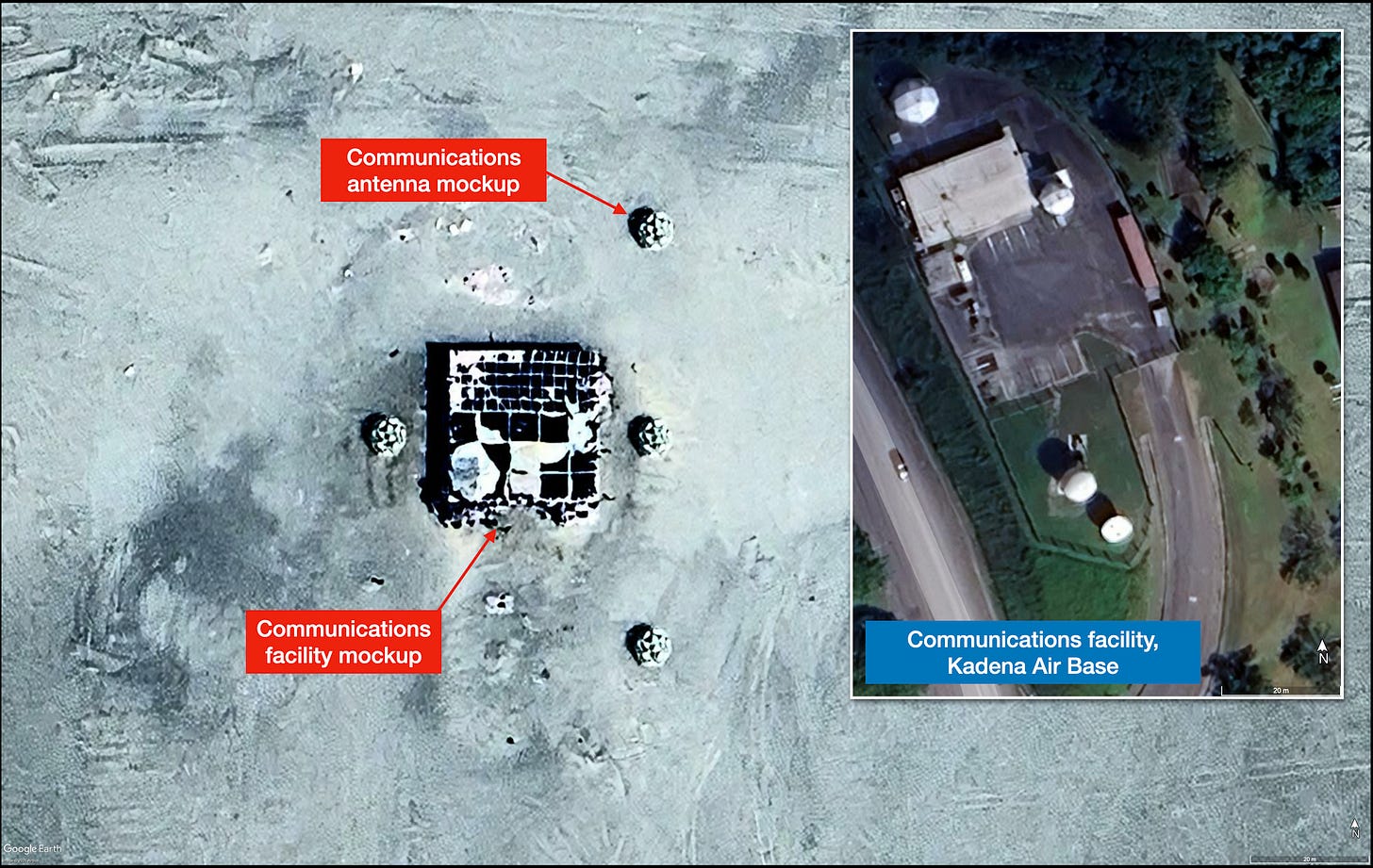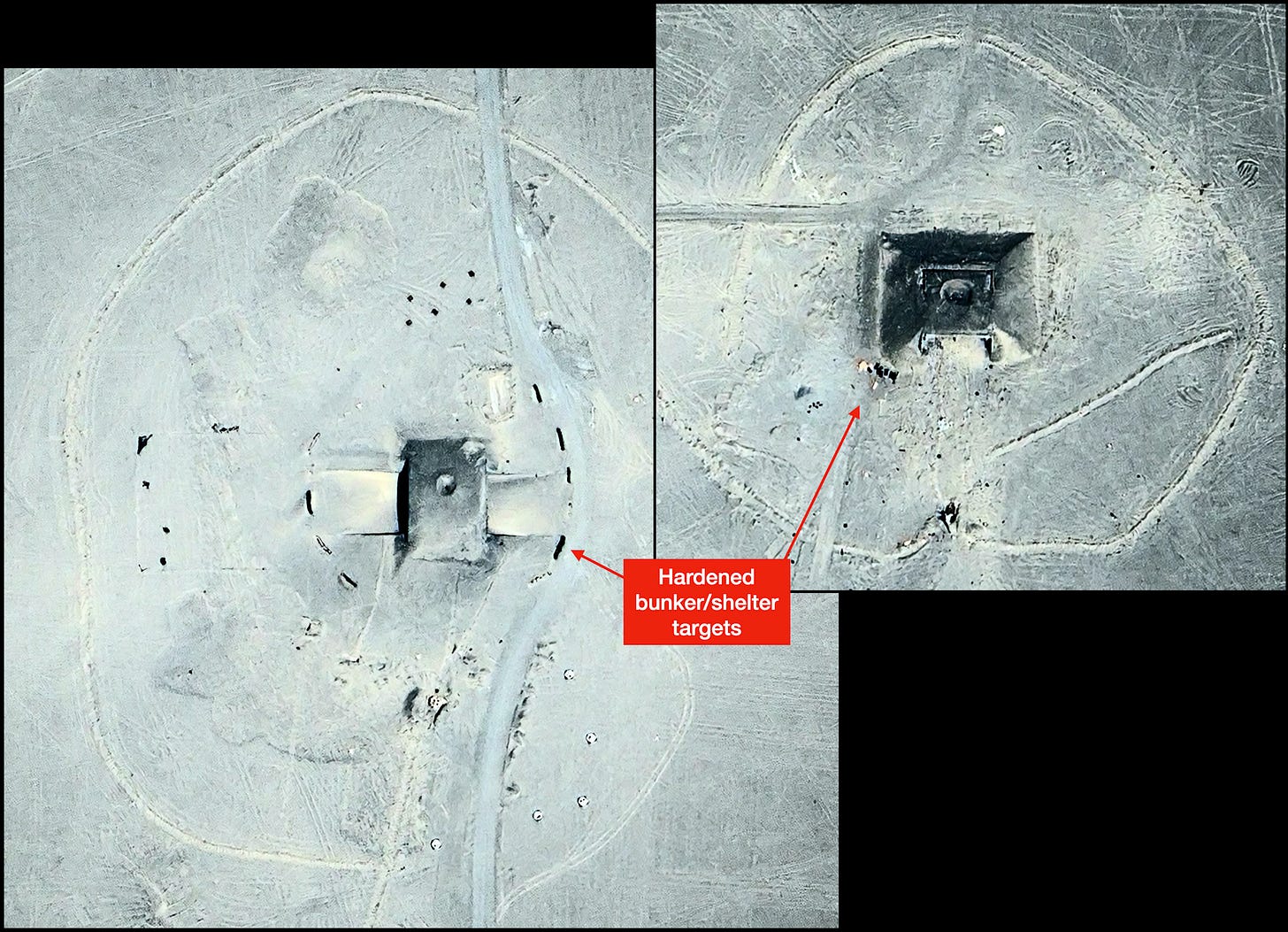Recently updated Google Earth imagery from May 2025 offers a glimpse into China's ongoing missile testing at a remote desert location in western China (near Lop Nur, coordinates 39.766N, 90.550E). The imagery—as far as I know, the first freely available of this spot since 2020—is panchromatic grayscale, with high resolution.
An overview image below shows the testing range with its numerous target sites. There are clusters of buildings and other infrastructure, aircraft mockups, various vehicle tracks, hardened bunkers or shelters, and widespread crater and debris fields. The sum of these highlights China's methodical approach to testing diverse and sophisticated strike capabilities—including perhaps new capabilities against moving ground vehicle targets.
Familiar Targets, New Observations
One target type encountered before on Chinese missile ranges is multi-story concrete buildings, which perhaps simulate command or headquarters facilities. Comparing imagery from 2020 to 2025, we can observe what look like numerous penetrations, suggesting possible tests with submunitions. This could indicate a shift toward neutralizing, rather than completely destroying, critical structures.
"Informationized Warfare" Targets
Further highlighting the PLA's focus on "informationized warfare" against enemy command, control, and communication systems, we see the apparent destruction of a mock communications facility. For comparison, see the image of an actual communications facility at Kadena Air Base in Okinawa.
Mock Aircraft and Hardened Shelters
The imagery also reveals mockups of U.S. and allied aircraft, notably F-16 and F-35 fighters. Particularly striking is evidence of a now-destroyed mockup E767 airborne early warning aircraft. A type used exclusively by Japan's Air Self-Defense Force, this mockup was first publicly revealed in 2022 by Nikkei Asia.
There is also a what looks like a large aircraft outline, with dimensions of roughly 60 by 50 meters, possibly representing another high-value target that may have been destroyed and removed or buried.
Also evident are mock targets resembling hardened bunkers or shelters, showing precision strikes penetrating near dead-center of each.
Moving Vehicle Targets: An Emerging Missile Capability?
Perhaps the most interesting feature of the impact range is the presence of what look like several track or guide rail systems (approximately 80-100 meters in length) with vehicles mounted on them. If that is truly what they are, these tracks could perhaps simulate moving targets; they would likely do so briefly, since vehicles traveling at a speed of, say, 30 mph would cover those short distances in under 10 seconds.
The vehicle mockups seem to include possible missile launchers and other unidentified truck types. China has previously tested rail-mounted targets simulating ships; if that is what this is, this development could represent the testing of a potential capability to detect and strike moving ground vehicles with long-range missiles, a capability I have not seen from the PLA before.
Elsewhere on the range, we can observe parallel sets of roads, possibly for further mobile target testing.
Nearby, there is a straight road with what looks like debris fields and impact craters, possibly from tests against moving vehicle targets.
There is also an oval-shaped track, with a debris fields hinting at past weapon testing.
Implications
This testing activity points to China’s continued robust weapons and sensor development program. In particular, the ability to discriminate and strike individual vehicles at long range would be a significant advance, since it would likely require autonomous target recognition. (Note: if that is what this is, we are not talking here about guiding short-range weapons like Mavericks or JDAMs onto targets being actively designated by nearby drones or aircraft.) One can imagine the short vehicle tracks being used to test something like a missile’s terminal homing capability, which would indeed last only a few seconds in the case of a high-speed missile.
Developing such a capability would make sense, given U.S. and allied efforts to disperse forces into smaller, more survivable units, such as U.S. Marine Littoral Regiments and new coastal defense missile systems being deployed by Taiwan and Japan. While it might not seem to make sense from a cost perspective to expend long-range missiles on individual vehicles, given the strategic effects those forces could have on China’s naval power projection capability in the region, it might make sense at the operational level. And perhaps submunitions could be used to strike multiple vehicles with a single large missile. In any case, we will have to wait and see…
Note: this piece was written with the assistance of artificial intelligence















It’s good to see at least someone appreciates a robust test and evaluation process.